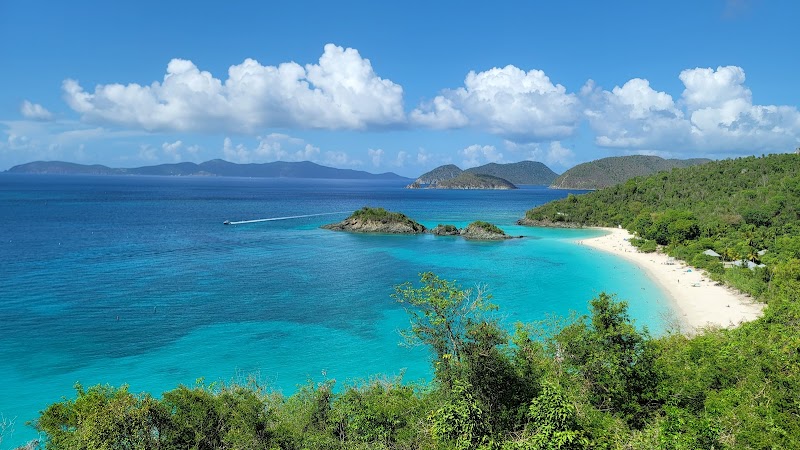Exploring St Thomas Environmental Attractions: Adventure Awaits in Nature’s Playground
Discover the dynamic environmental attractions near St Thomas, perfect for hikers, snorkelers, and eco-adventurers. From mangrove lagoons to vibrant coral reefs and forest trails, St Thomas offers immersive experiences that balance natural beauty with practical exploration tips.
Early Morning Starts
Begin your hikes or marine excursions early to avoid midday heat and catch calmer winds or water conditions.
Hydration Strategy
Pack at least two liters of water per person and take breaks regularly to stay energized and avoid heat exhaustion.
Footwear Matters
Wear sturdy hiking shoes for rocky trails and non-slip water shoes for mangrove and seaside explorations.
Respect Marine Life
Avoid touching coral reefs and marine creatures; this protects both you and the fragile ecosystem.
Exploring St Thomas Environmental Attractions: Adventure Awaits in Nature’s Playground
St Thomas in the U.S. Virgin Islands stands as a gateway to some of the Caribbean’s most striking environmental attractions. Positioned to thrill nature lovers and outdoor enthusiasts alike, this island offers lush hiking trails, vibrant coral reefs, and pristine beaches where the environment actively engages your senses and challenges your spirit.
Among the top environmental sites, the St Thomas Mangrove Lagoon invites explorers to navigate dense, twisting waterways where mangrove roots reach like eager hands into the water. It’s a unique ecosystem offering refuge to bird species and juvenile marine life, ideal for kayaking or paddleboarding.
Another must-visit is the Virgin Islands National Park extending partly into St Thomas’s marine zones, offering reefs that dance with colorful fish and sea turtles. Snorkelers and divers will find this a living classroom of biodiversity pushing them deeper into the island’s ecological narrative.
Hiking options like the Paradise Point Trail weave through forested ridges, rewarding trekkers with panoramic views over Charlotte Amalie harbor. The terrain climbs steadily over 2.5 miles with an elevation gain of roughly 600 feet—enough to engage moderate-level adventurers seeking both challenge and scenery.
Planning your visit means considering tides for marine activities, wearing sturdy footwear for rough trails, and carrying sufficient water to stay hydrated in the tropical heat. Early morning departures often provide the most comfortable conditions, with calm winds and quieter paths.
St Thomas environmental attractions invite visitors not just to witness nature but to become part of its ebb and flow. Each path and current dares you to meet it on its terms—fiercely alive and demanding respect. With diverse ecosystems waiting at every turn, your next outdoor adventure on St Thomas is meticulously poised to engage, educate, and exhilarate.
Nearby Trips
All Adventures
Boat Charters
Water Activities
Adventures near Charlotte Amalie
Discover the unique and memorable adventures that make Charlotte Amalie special.
Frequently Asked Questions
What is the best way to experience St Thomas’s mangroves?
Kayaking through the mangrove lagoons offers the intimate chance to explore their winding roots and observe local birds and juvenile marine life in calm water conditions.
Are there any lesser-known viewpoints on the Paradise Point Trail?
Yes, midway between the trailhead and summit, a hidden clearing on the eastern ridge offers unobstructed views of the St Thomas harbor and surrounding islands, often free from crowds.
Which local wildlife should visitors watch for near environmental attractions?
Expect to see magnificent frigatebirds soaring above, vibrant parrots flitting between trees, and if diving, spotted eagle rays and green sea turtles in coastal waters.
What should hikers prepare for when tackling trails on St Thomas?
Prepare for moderate elevation gain over uneven, rocky terrain. Wear supportive shoes, carry ample water, and start early to avoid heat and afternoon rains.
How does nature conservation impact visiting these areas?
Respecting trail markers, avoiding disturbance of wildlife, and leaving no trace minimizes human impact and helps preserve these vibrant ecosystems for future adventurers.
Are there historical sites connected to the environmental areas?
Some coastal trails pass near remnants of old sugar plantations and colonial fortifications, revealing layers of the island’s cultural legacy intertwined with natural landscapes.
Recommended Gear
Hiking Shoes
Provides traction and foot support essential for rocky and uneven paths.
Reusable Water Bottle
Crucial for maintaining hydration, especially during hot months.
Wide-Brim Hat
Offers sun protection for exposed trail sections and during water activities.
Snorkeling Gear
Enables close encounters with vibrant coral reefs and marine species in protected areas.
Local Insights
Hidden Gems
- "The quiet Foxy’s Taboo Trail, a short hike with views over Silent Waters Bay."
- "Coral Bay Beach Access, less crowded with diverse intertidal life."
Wildlife
- "Brown pelicans, Caribbean flamingos near wetland edges, and the endangered St Thomas knob coral."
History
"Several trails cross historical plantation ruins and colonial-era watchtowers that once guarded against invaders, blending cultural history with natural exploration."
